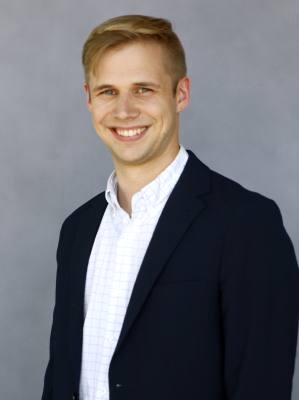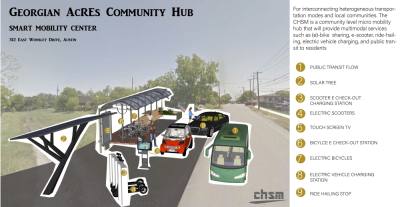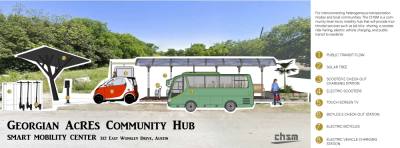During the meeting, Carrasco said community leaders pointed to needs ranging from Wi-Fi access to a transit option to get to H-E-B. Four months later, the project announced a $1 million grant to build a mobility transit hub in the neighborhood with many of the elements discussed in that meeting.
“They were OK with honesty, and I think that's always the best when you have a city program that says we want honesty,” said Carrasco, who works as a community coordinator at Austin Voices, an organization that takes a community-based approach to education.
The project, which the Austin Transportation Department said will be operational in six months, takes a comprehensive approach to transit in the neighborhood. It plans to include a fixed shuttle that runs to the H-E-B on North Lamar Boulevard and the Lamar Transit Center, free Wi-Fi, a food pantry, and bicycle and scooter stations. It also plans to use solar trees to power the hub and provide shade.
Junfeng Jiao, an associate professor in the community and regional planning department at The University of Texas, served as one of the project’s principal investigators. When he saw the grant opportunity through the National Science Foundation's Civic Innovation Challenge in 2019, he said he knew it would be a great opportunity to use a community-based approach to tackle transit inequity.
According to a press release from the transportation department, the challenge was “an initiative to find community-based solutions to address challenges related to equality and natural disasters and make them sustainable, scalable and transferrable to other communities across the U.S.”
Jiao said he wanted to take an approach that put the neighborhood first.
“We tried to avoid parachuting to a neighborhood,” Jiao said. “Because they’re the people who know best, they tell us what they need.”
Jiao noted two mobility issues in the Georgian Acres neighborhood: First, the neighborhood is a transit desert, or an area with limited transportation, because four major roads, I-35, Rundberg Lane, North Lamar and US 183, constrict mobility.
That dynamic in turn creates a challenge for commuters trying to navigate the first and last mile of their commute, the second issue. For example, the stretch from the Lamar Transit Center to the Georgian Acres neighborhood, around 2 miles, requires crossing busy roads. Jiao described commuting between the neighborhood and transit center as “not very friendly.”
“Mobility is a basic human right as I view it,” Jiao said. “If you happen to live in a transit desert, where you have to rely on public transportation, but there's not enough or no transportation available to you, you’re basically stuck there.”
Carrasco said the project also underscores the importance of road safety, as many of the students that he works with walk home from school by crossing under I-35 on Rundberg Lane, a heavily trafficked area.
“Transportation, for some folks when they look at Rundberg, they're like, ‘Oh, but it's four blocks down, what do you mean? Why can't they just walk?” Carrasco said. “Well it's five blocks down, but you got to cross underneath these traffic areas, and five blocks on Rundberg is a long way.”
According to the transportation department press release, public transit and personally owned vehicles are the most common forms of transportation in the neighborhood. It added commute times in Georgian Acres are 67% higher than the city average.
The project also will partner with Jail to Jobs, an organization that connects offenders under the age of 25 with job opportunities by employing three to five drivers of the shuttles. Jeremias Cooper, Travis County director at Jail to Jobs, found out about the program when a volunteer asked him to fill out a survey about the proposed mobility hub.
“We start speaking and throwing some ideas out there. She learned more about our organization and what we do,” Cooper said. “We came up with the ideas and those are just ideas that we just threw out there, and then they came to fruition just by everybody coming together and thinking things through.”
Cooper added he notices a stark difference between downtown mobility compared to the Rundberg area, pointing to the scooter and bike options in Central Austin. However, the mobility hub gives him a sense of optimism that stems in large part from community involvement in the project.
“I believe the big win is that it's happening with an organization that is centered in the community that is actually helping, so the community feels tied into the program,” Cooper said.







